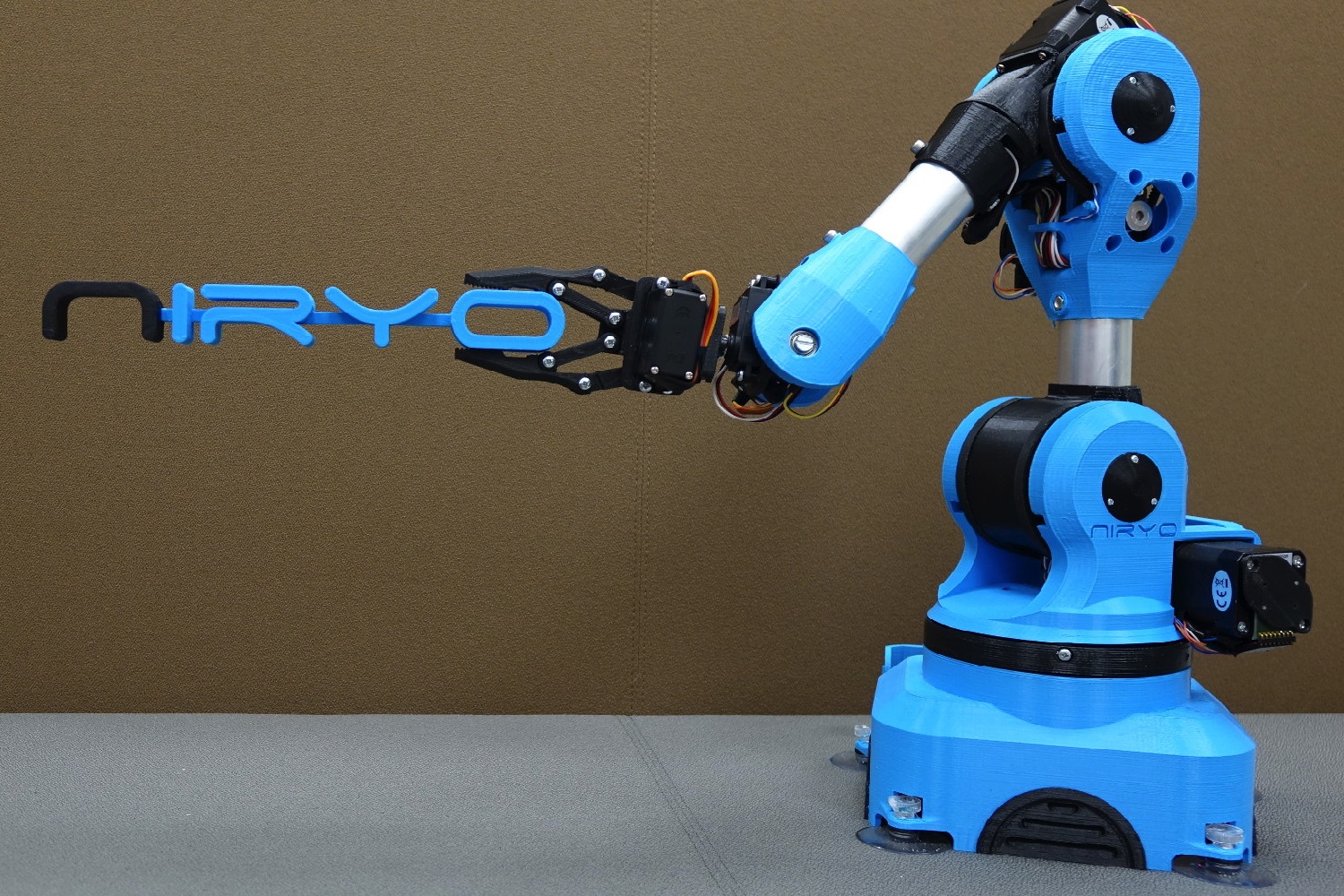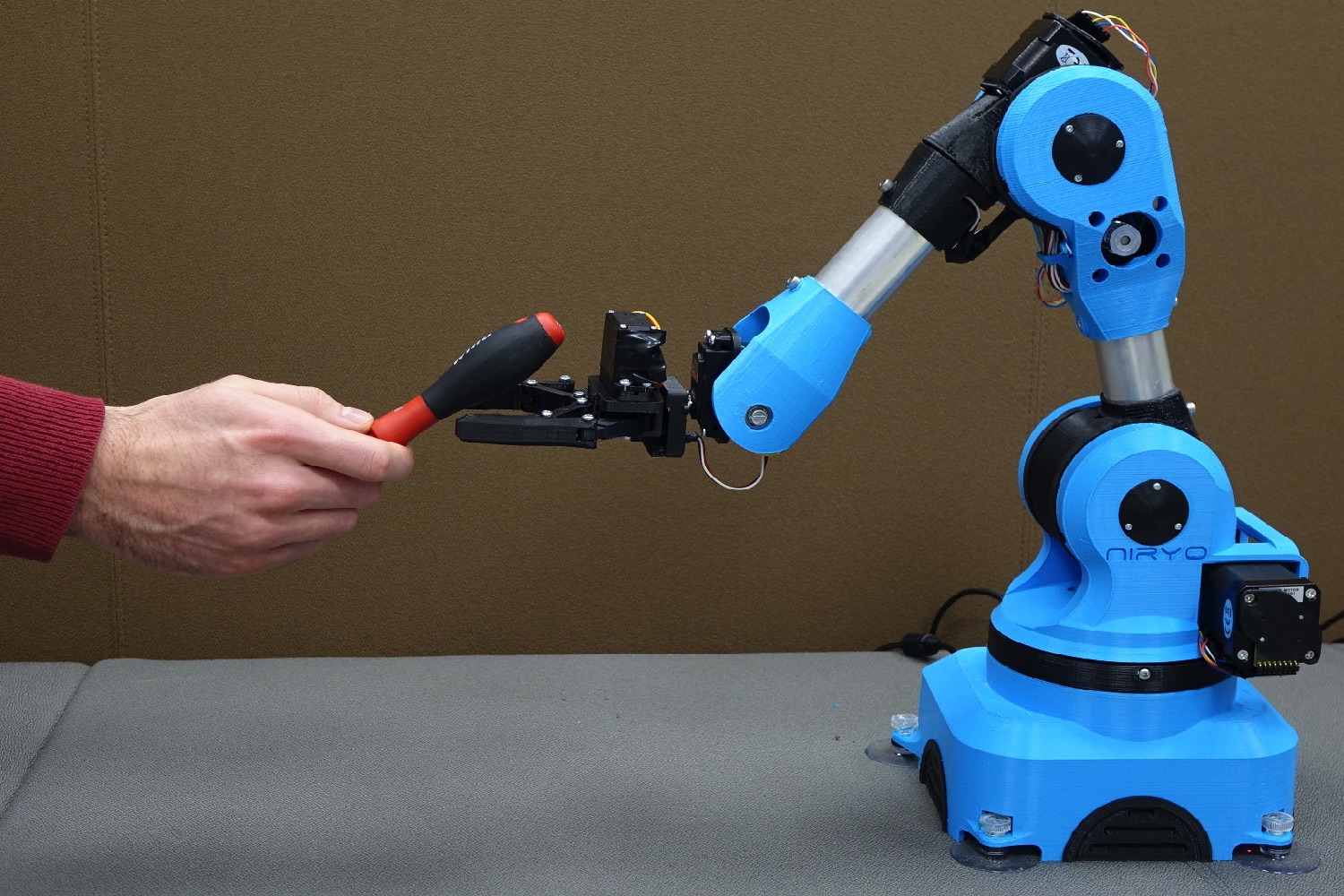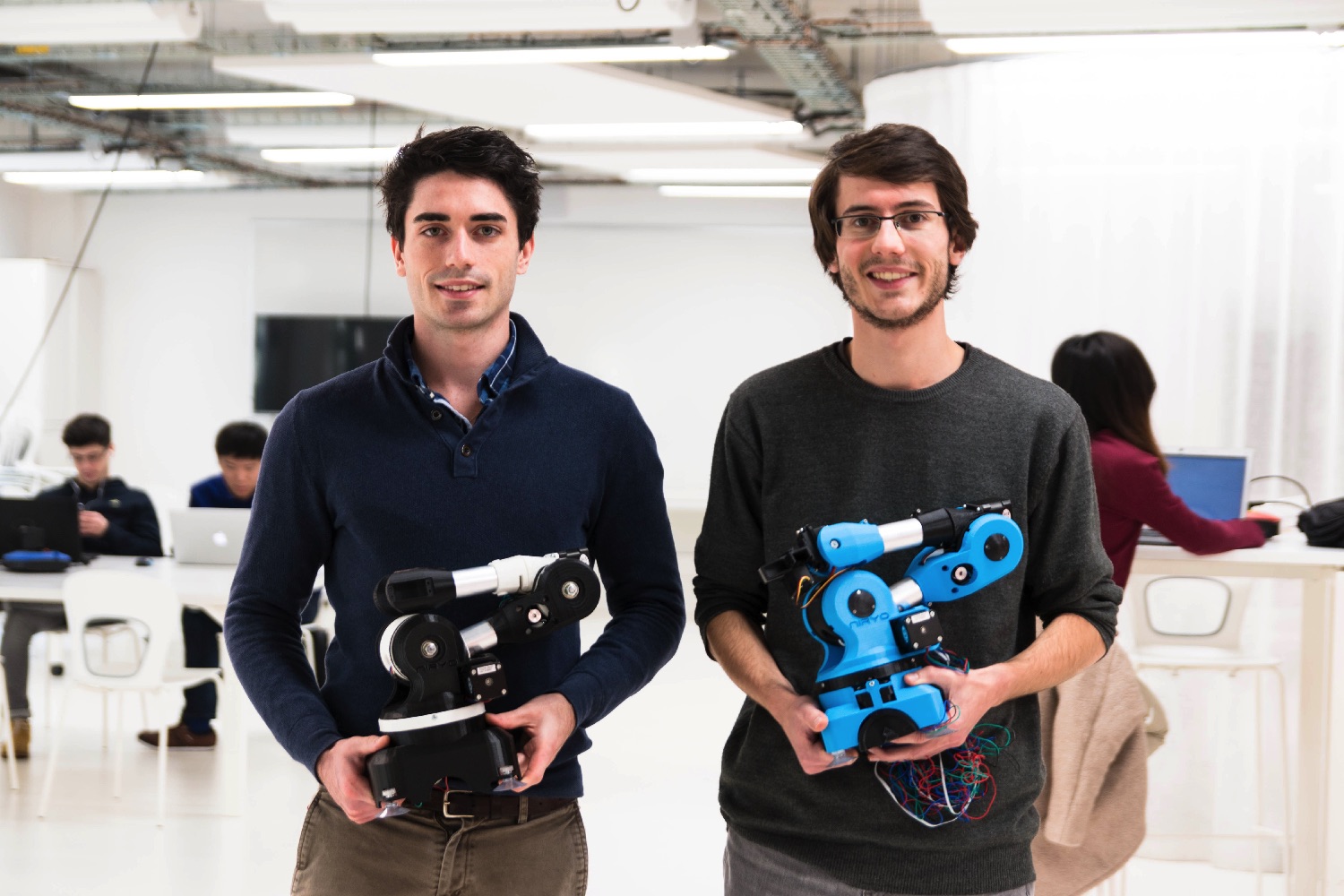That is where Kickstarter project Niryo One enters the frame. It’s an open-source, six-axis robotic arm targeted at makers, developers, and students. Using technologies like 3D printing, Arduino, Raspberry Pi, and Robot Operating System, it is intended to be both affordable and easy to use, while still giving you the powerful, internet-connected robot arm assistant you always dreamed of.
“Mostly, Niryo One will be used for education purposes and to reproduce industrial use cases,” Edouard Renard, one of the project’s creators, told Digital Trends. “Anyone can use it from a child to an advanced engineer.”
In the home, Renard said that Niryo One could be used to carry out “pick-and-place” tasks or to automate boring day-to-day chores. Users can easily program it using an accompanying app, or even just directly moving the robot to learn a sequence in what they are calling “learning mode.”
At school, meanwhile, Niryo One can be used to teach students new technologies and robotics, while companies can use it as a more affordable alternative to pricey industrial robots.
To make it a versatile tool, the robot arm uses attachments like a suction pump, gripper, or electromagnet — thereby giving it a wide range of possible applications. Sharing use cases for the robot can be carried out easily using its custom mobile app and it’s even possible to synch up multiple robots for complex tasks, or as part of a mini factory production line.
Renard said the goal of the project is to contribute toward “robotics democratization.” If Niryo One turns out to work as well as he suggests, this could be one heck of a useful tool. Or, at the very least, let us pretend to be high-tech mad scientists from the comfort of our bedrooms.
You can pre-order the robot on Kickstarter, where prices start at 119 euros ($127) for a four-axis mini kit. The full Niryo One experience starts at 549 euros ($587) or a bit more if you don’t want to 3D print a few of your own pieces. Shipping is set to take place in September.
Editors' Recommendations
- Fluid One gives you point-and-click control of your smart home, from your smartphone
- Space station’s new robotic arm springs to life
- This tiny robot tank could one day help doctors explore your intestine
- Youbionic’s new robot appendage lends a hand without costing an arm and a leg
- Armed and ready: Mars 2020 rover is fitted with its robotic arm







